Michigan hop crop report week of July 24, 2025
The 2025 hop crop is coming along nicely.

Weekly weather review
Temperatures across much of Michigan have been above average over the last month and very hot Wednesday-Thursday, July 23-24. With the warm weather, growing degree days (GDD) base 50 degrees Fahrenheit are now above average for most areas of the Lower Peninsula (March 1-July 22). The Upper Peninsula is more variable with below average to above average heat accumulation depending on location. Accumulated precipitation has been above average across most of the Upper Peninsula and northern lower Michigan and below average across west central, southwest and southcentral Michigan.
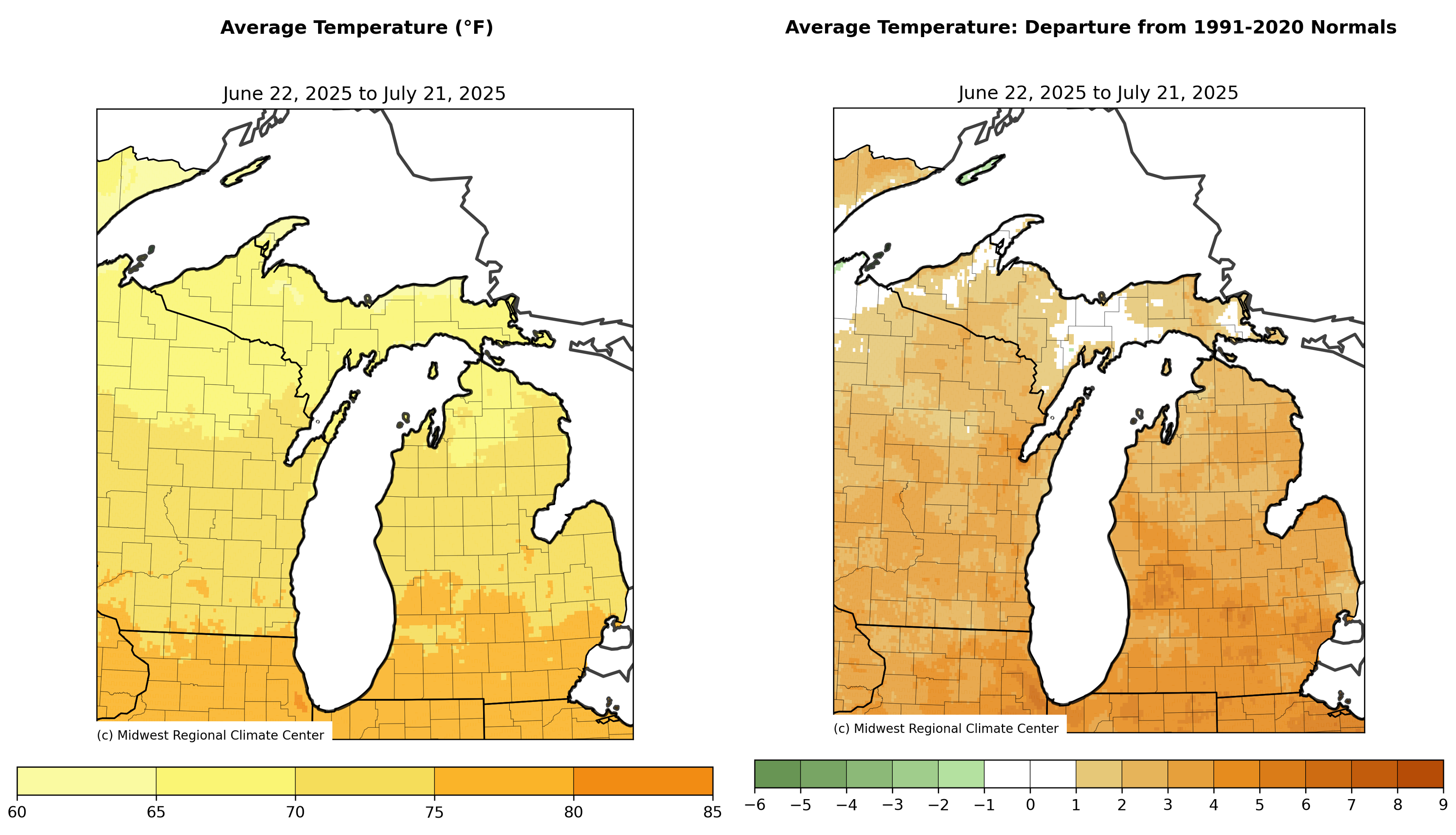
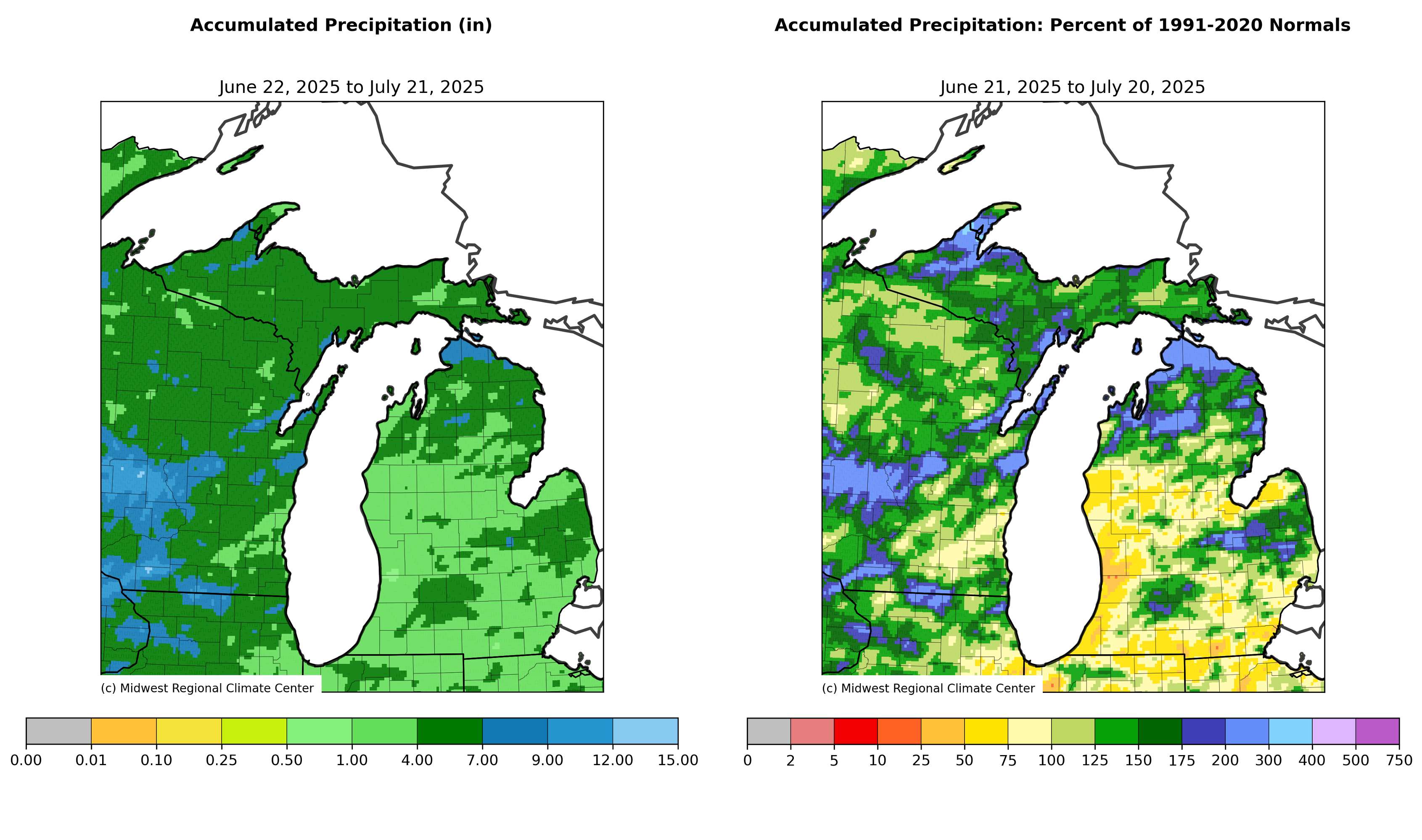
Accumulated GDD base 50 range from near 800 in the Upper Peninsula and around 1,700 in certain areas of southern Michigan. GDD base 50 are near or just slightly below the long-term average across most of state.
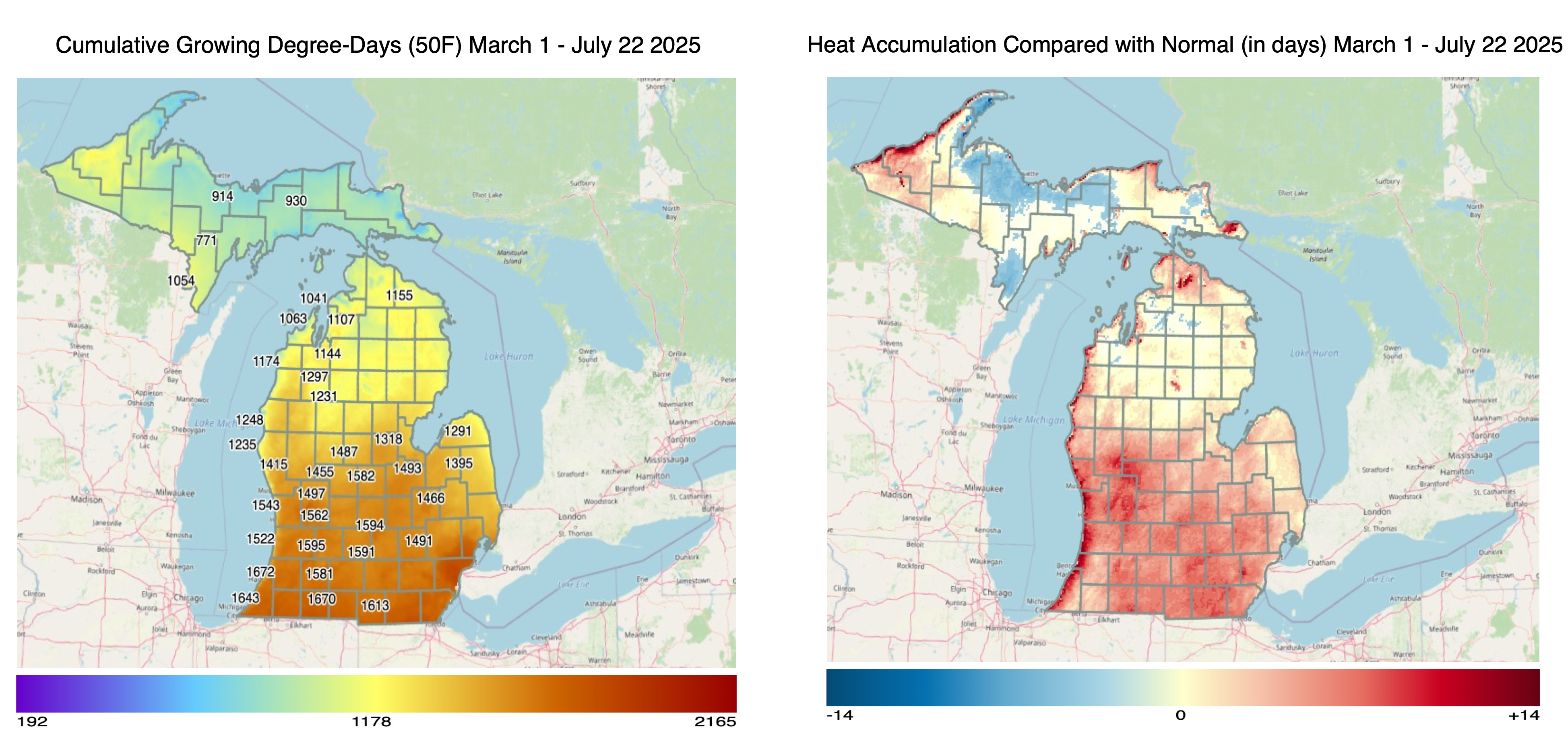
Looking ahead
Scattered showers and thunderstorms are possible across much of the state Thursday afternoon (July 24) through the evening. There is potential for additional precipitation across southern Michigan through the weekend.
As the heat dome gives way, high temperatures will drop to the low 80s in northern Michigan and high 80s and further south. Lows will be in the 60s-70s through the weekend and into early next week. From July 23-30, the forecast suggests 1-2 inches of precipitation depending on location. The 6-10 day forecast suggests slightly warmer than normal temperatures and near normal precipitation.
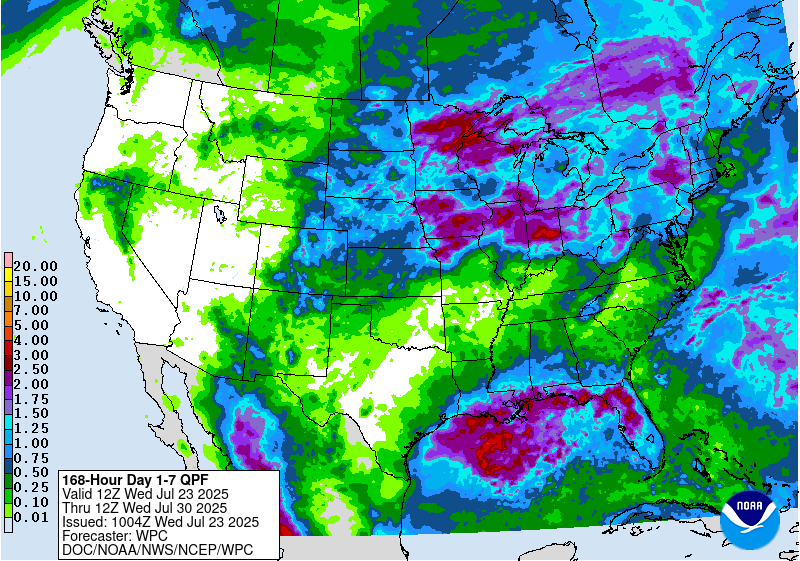
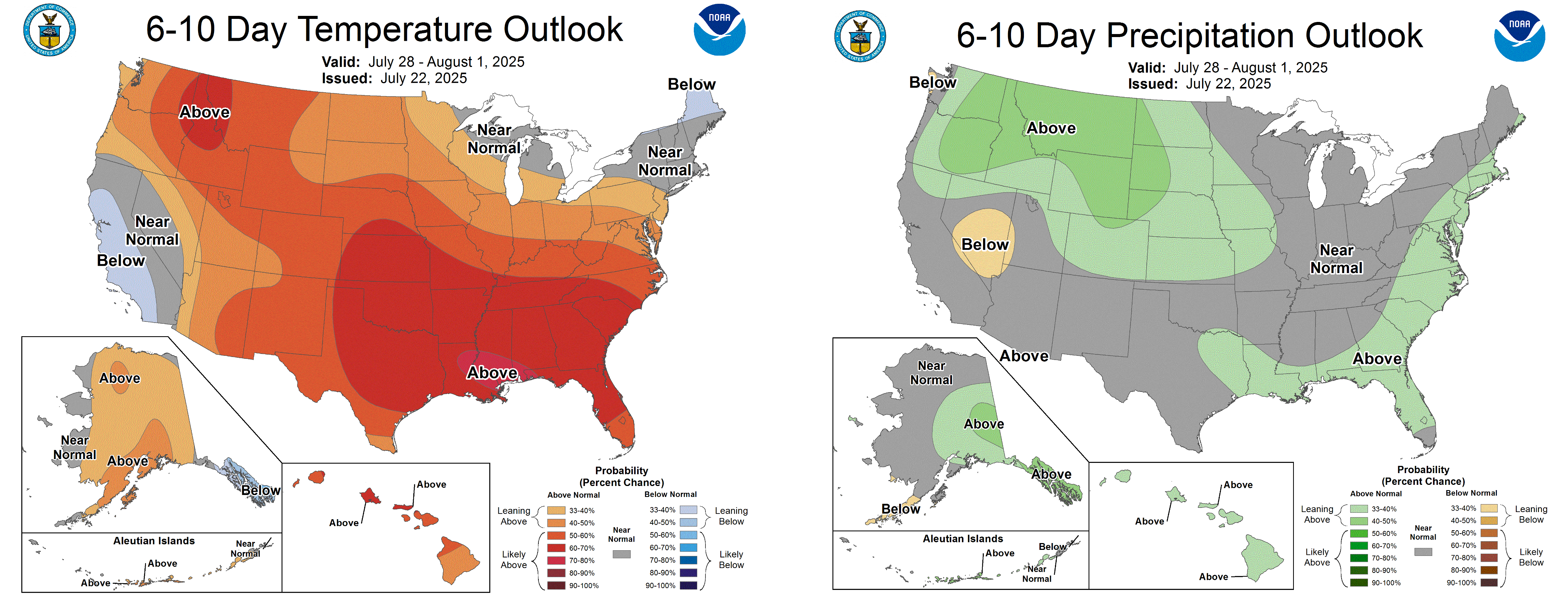
For the most recent Michigan State University agriculture weather forecast, visit: MSU Extension Agriculture Weather.
Stage of production/physiology
Hops across Michigan are in Principal Growth Stage 2: Formation of Side Shoots, 3: Elongation of Bines, 5: Inflorescence emergence, 6: Flowering (burr stage) and 7: Development of cones depending on growing location. Sites in southern Michigan are roughly one to two weeks ahead of sites in northern Michigan.

In the field
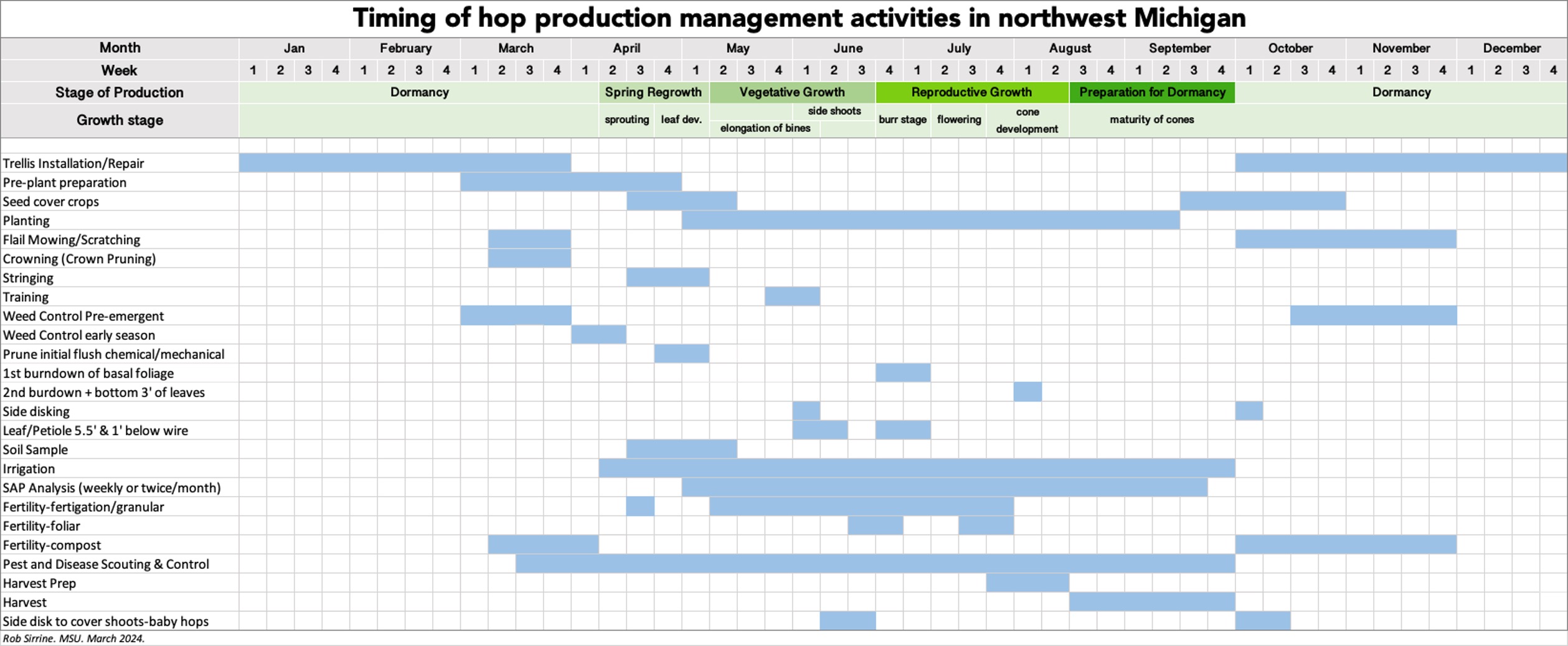
Hop plants are in or transitioning into the reproductive stage across the state. Growers are actively fertigating, applying micronutrients based on leaf/petiole sample lab results and sufficiency ranges (see chart below), and have halted nitrogen application. Growers are scouting and treating for mites, European corn borer and Japanese beetles if necessary and applying plant protection products for downy mildew, powdery mildew and halo blight.
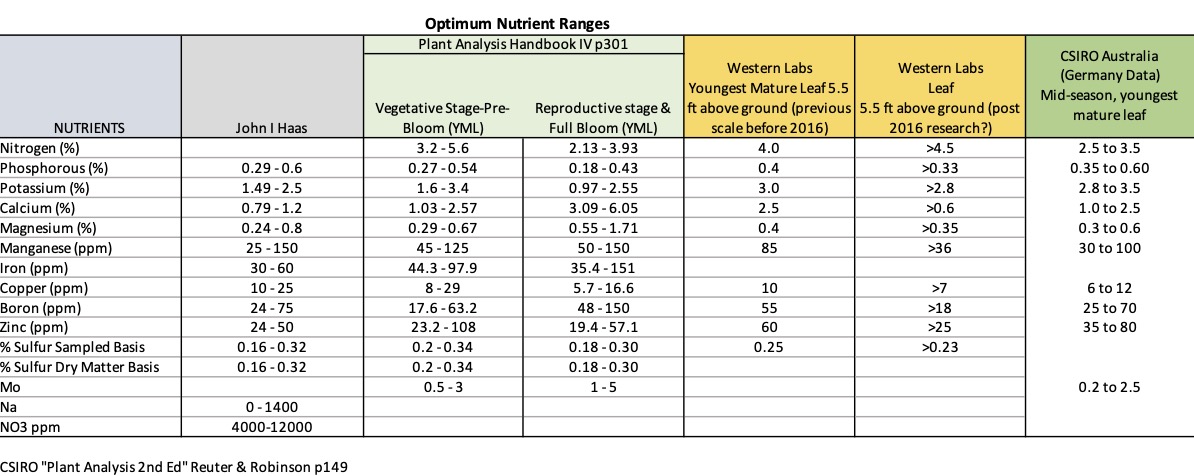
Leaf and petiole nutrient labs:
- Agro-Liquid, St. Johns, MI
- A&L Great Lakes, Ft. Wayne, IN
- New Age Laboratories, South Haven, MI
- Brookside Labs, New Knoxville, OH
SAP analysis labs:
- Agro-K, Minneapolis, MN
- Crop Health Labs, Bellville, OH
- New Age Laboratories, South Haven, MI
Sincere thanks to the Michigan hop producers who provided timely input for the Michigan Hop Crop Report.
Pest management
For current pest management information, see the Michigan hop pest report - July 24, 2025.
Stay connected!
For more information on hop production practices, please sign up for the hop MSU Extension Newsletter, the free MSU Hop Chat Series and continue to visit Michigan State University Extension’s Hops webpage or the MSU Hops News Facebook.
If you are unsure of what is causing symptoms in the field, you can submit a sample to MSU Plant & Pest Diagnostics. Visit the webpage for specific information about how to collect, package, ship and image plant samples for diagnosis. If you have any doubt about what or how to collect a good sample, please contact the lab at 517-432-0988 or pestid@msu.edu.
Become a licensed pesticide applicator
All growers utilizing pesticide can benefit from getting their license, even if not legally required. Understanding pesticides and the associated regulations can help growers protect themselves, others, and the environment. Michigan pesticide applicator licenses are administered by the Michigan Department of Agriculture and Rural Development. You can read all about the process by visiting the Pesticide FAQ webpage. Michigan State University offers a number of resources to assist people pursuing their license, including an online study/continuing ed course and study manuals.
This work is supported by the Crop Protection and Pest Management Program [grant no 2024-70006-43569] from the USDA National Institute of Food and Agriculture. Any opinions, findings, conclusions, or recommendations expressed in this publication are those of the author(s) and do not necessarily reflect the view of the U.S. Department of Agriculture.



 Print
Print Email
Email